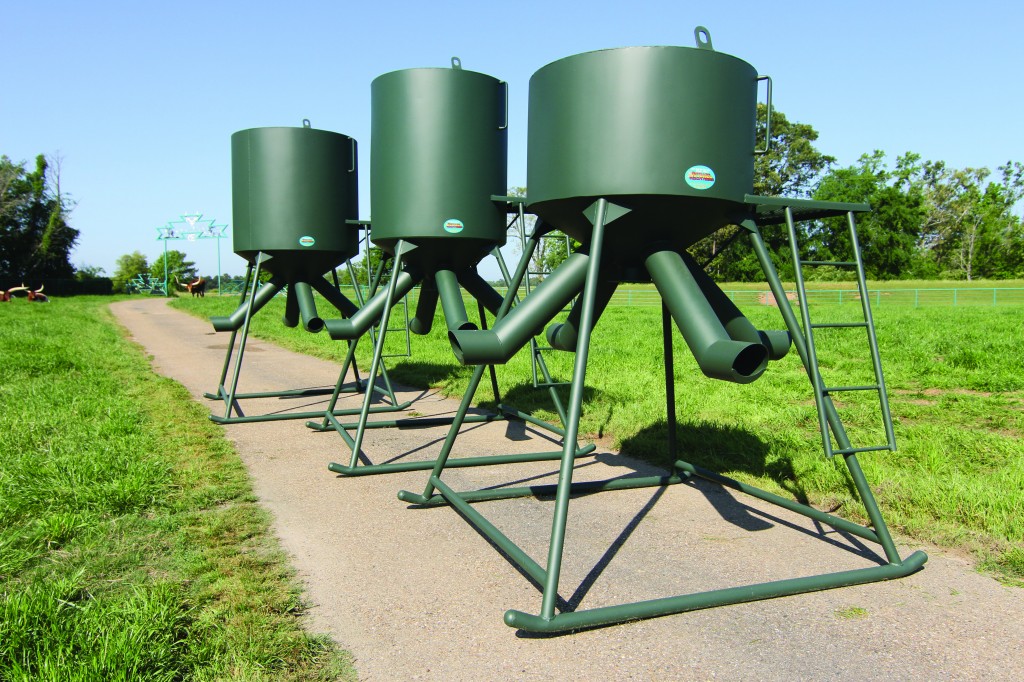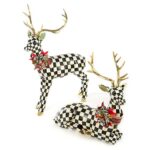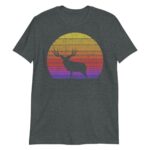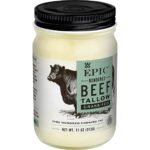Bulk deer feeders have emerged as an essential tool for hunters seeking to attract and maintain a thriving deer population. Whether you’re an experienced hunter or just starting out, this comprehensive guide will provide you with everything you need to know about bulk deer feeders, from their role in hunting to their legal considerations and responsible use.
Hunting Supplies and Equipment
Bulk deer feeders play a crucial role in hunting by attracting deer to specific locations, making them more accessible for hunters. These feeders are especially beneficial in areas with limited natural food sources or during seasons when natural food is scarce.
In hunting scenarios where deer movement is restricted due to factors such as dense vegetation or rugged terrain, bulk deer feeders can create artificial feeding stations that draw deer into open areas, increasing the chances of a successful hunt.
Types of Hunting Supplies and Equipment
To enhance the effectiveness of bulk deer feeders, hunters often utilize complementary hunting supplies and equipment. These include:
- Scent control products, such as sprays and clothing treatments, help minimize human odor that can spook deer.
- Camouflage gear, including clothing and face masks, allows hunters to blend into their surroundings and avoid detection by deer.
- Binoculars or spotting scopesenable hunters to observe deer from a distance, assessing their size and behavior before making a shot.
- Hunting stands or blindsprovide elevated positions or concealment for hunters, increasing their chances of success.
- Deer calls, which imitate the sounds made by deer, can be used to attract or communicate with deer during hunting.
Types of Bulk Deer Feeders

Bulk deer feeders come in various types, each with its own set of advantages and disadvantages. These feeders are designed to provide a continuous supply of feed to deer, making it easier for hunters to attract and maintain a healthy deer population.
Materials
Bulk deer feeders can be made from a variety of materials, including:
- Polyethylene: Polyethylene is a lightweight and durable plastic that is commonly used for bulk deer feeders. It is resistant to rust and corrosion, making it suitable for outdoor use.
- Metal: Metal bulk deer feeders are typically made from galvanized steel or aluminum. They are more durable than plastic feeders but can be heavier and more expensive.
- Wood: Wooden bulk deer feeders are less common but can be an attractive option for hunters who want a more natural look. They are not as durable as plastic or metal feeders but can be treated to resist rot and decay.
Design, Bulk deer feeders
Bulk deer feeders also vary in design, including:
- Gravity feeders: Gravity feeders rely on gravity to dispense feed into a trough or pan. They are simple to operate and maintain but can be prone to spoilage if not properly sealed.
- Spinner feeders: Spinner feeders use a rotating disc to distribute feed. They are more expensive than gravity feeders but are less prone to spoilage and can be programmed to dispense feed at specific times.
- Trough feeders: Trough feeders are open containers that hold a large amount of feed. They are simple and inexpensive but can be difficult to keep clean and can attract pests.
Capacity
Bulk deer feeders come in a variety of capacities, ranging from a few hundred pounds to several tons. The capacity of a feeder will depend on the size of the deer herd and the frequency with which it is filled.
Popular Brands and Models
Some of the most popular bulk deer feeder brands and models include:
- Moultrie Pro Hunter Feeder: The Moultrie Pro Hunter Feeder is a gravity feeder with a capacity of 300 pounds. It is made from durable polyethylene and features a built-in timer.
- Texas Hunter Trophy Feeder: The Texas Hunter Trophy Feeder is a spinner feeder with a capacity of 500 pounds. It is made from galvanized steel and features a digital timer.
- Wildgame Innovations Apex Trough Feeder: The Wildgame Innovations Apex Trough Feeder is a trough feeder with a capacity of 1,000 pounds. It is made from durable plastic and features a built-in lid.
Placement and Management

Ideal Placement
Bulk deer feeders should be placed in areas where deer are known to frequent, such as near bedding areas, water sources, or food plots. The feeder should be placed in a clearing to provide deer with a good view of the surrounding area and to make them feel safe while feeding.
It should also be placed away from human activity and potential predators.
Feeder Maintenance
Bulk deer feeders should be regularly cleaned and filled to keep them in good working condition. Cleaning should be done at least once a month to remove any spilled feed or debris that could attract pests or disease. Feeders should be filled as needed to ensure that deer have access to a consistent food source.
Managing Deer Populations
Bulk deer feeders can be used to manage deer populations by providing a supplemental food source during times of food scarcity. This can help to reduce deer damage to crops and vegetation and can also help to improve the health of the deer herd.
Legal Considerations and Regulations

The use of bulk deer feeders is subject to various legal considerations and regulations that vary across hunting areas. Understanding these regulations is crucial for responsible hunting practices.
In some areas, the use of bulk deer feeders may be prohibited or restricted to specific seasons or locations. These regulations aim to prevent overpopulation, promote fair chase, and minimize the spread of diseases. It’s essential to check with local wildlife agencies for specific regulations in the hunting area.
Ethical Implications
The use of bulk deer feeders raises ethical concerns among hunters. Some argue that feeders provide an unfair advantage by artificially concentrating deer in specific areas, making them easier to harvest. Others believe that feeders can supplement natural food sources during times of scarcity, supporting deer populations and providing hunting opportunities.
Bulk deer feeders are a popular way to attract deer to your hunting property. They can be used to supplement the natural food supply or to provide a consistent food source during the winter months. If you’re looking for a more challenging hunting experience, consider using a 300 blackout rifle for deer hunting.
This rifle is a great choice for deer hunting because it’s accurate, powerful, and easy to handle. Plus, it’s a great way to get close to the deer without spooking them. With a little practice, you’ll be able to take down a deer with a single shot.
After the hunt, don’t forget to refill your bulk deer feeders to keep the deer coming back for more.
Ethical hunters should consider the potential impacts of bulk deer feeders on the natural behavior and population dynamics of deer. They should prioritize fair chase principles and avoid using feeders to gain an unfair advantage.
Responsible Hunting Practices
Responsible hunting practices related to bulk deer feeders include:
- Adhering to local regulations and restrictions.
- Using feeders in moderation to supplement natural food sources.
- Avoiding overfeeding, which can lead to health problems and overpopulation.
- Hunting deer in a fair and ethical manner, respecting the principles of fair chase.
li>Maintaining feeders in a clean and sanitary condition to prevent the spread of diseases.
Design and Construction
Bulk deer feeders are designed to hold large quantities of feed, making them ideal for providing a consistent food source for deer populations. These feeders come in a variety of sizes and styles, but they all share some common design features.
One of the most important design features of a bulk deer feeder is its capacity. The capacity of a feeder will determine how much feed it can hold and how often it needs to be refilled. Feeders with larger capacities can hold more feed, which means they need to be refilled less often.
However, larger feeders are also more expensive and may be more difficult to move and maintain.
Deer feeders are awesome for hunting, but what about hunting with a 9mm? Can 9mm kill a deer ? Yes, it can, but it’s not ideal. Back to deer feeders, they come in different sizes, from small to bulk deer feeders.
Bulk deer feeders can hold up to 500 pounds of corn and can feed a lot of deer at once.
Another important design feature of a bulk deer feeder is its weather resistance. Feeders should be made of materials that can withstand the elements, including rain, snow, and wind. Feeders that are not weather-resistant will quickly deteriorate and become unusable.
Finally, bulk deer feeders should be easy to use. Feeders should be easy to fill and empty, and they should be designed to minimize waste. Feeders that are difficult to use are more likely to be abandoned by deer, which can lead to wasted feed and a decrease in deer populations.
Materials Used in Bulk Deer Feeder Construction
The materials used in the construction of a bulk deer feeder will determine its durability, weather resistance, and ease of use. The most common materials used in bulk deer feeder construction are:
- Metal: Metal feeders are durable and weather-resistant, but they can be expensive and heavy. Metal feeders are also susceptible to rust, which can shorten their lifespan.
- Plastic: Plastic feeders are lightweight and easy to move, but they are not as durable as metal feeders. Plastic feeders can also be damaged by UV rays, which can cause them to become brittle and crack.
- Wood: Wood feeders are a good option for those who want a natural-looking feeder. Wood feeders are relatively inexpensive and easy to build, but they are not as durable as metal or plastic feeders. Wood feeders are also susceptible to rot and decay, which can shorten their lifespan.
Building a Custom Bulk Deer Feeder
Building a custom bulk deer feeder is a great way to save money and get a feeder that is tailored to your specific needs. To build a custom bulk deer feeder, you will need the following materials:
- 1 sheet of 3/4-inch plywood
- 1 bag of concrete mix
- 1 bag of sand
- 1 bag of gravel
- 1 5-gallon bucket
- 1 shovel
- 1 trowel
- 1 level
- 1 drill
- 1 screwdriver
- 1 hammer
- 1 saw
Once you have gathered your materials, you can follow these steps to build your custom bulk deer feeder:
- Cut the plywood into the desired size and shape for your feeder.
- Assemble the plywood into a box shape and secure it with screws.
- Drill a hole in the bottom of the feeder for drainage.
- Mix the concrete mix according to the manufacturer’s instructions and pour it into the bottom of the feeder.
- Add the sand and gravel to the concrete mix and mix thoroughly.
- Level the concrete mix and allow it to dry completely.
- Place the feeder in the desired location and fill it with feed.
Deer Nutrition and Health
Understanding the nutritional value of deer feed and its impact on deer health is crucial for effective bulk deer feeder management. Different types of feed offer varying nutritional profiles, affecting deer health and population dynamics.
Nutritional Value of Deer Feed
- Corn:High in carbohydrates, providing energy but low in protein and other nutrients.
- Soybean Meal:Rich in protein, essential for growth and reproduction.
- Alfalfa Pellets:Excellent source of fiber, vitamins, and minerals.
- Mineral Supplements:Provide essential minerals often lacking in natural forage.
Impact on Deer Health and Population Dynamics
Bulk deer feeders can influence deer health and population dynamics in several ways:
- Nutritional Enhancement:Feeders can supplement natural forage, providing additional nutrients to improve deer body condition and reproductive success.
- Disease Transmission:Close proximity at feeders can increase the risk of disease transmission among deer.
- Population Control:Feeders can attract and concentrate deer, facilitating population management through selective hunting.
Selecting Appropriate Deer Feed
Choosing the appropriate deer feed depends on specific hunting goals:
- Antler Growth:Feeds high in protein and calcium, such as soybean meal, support antler development.
- Body Condition:Corn-based feeds provide energy for weight gain and body maintenance.
- Population Management:Mineral supplements can attract deer for selective harvesting.
Troubleshooting Common Issues: Bulk Deer Feeders
Maintaining bulk deer feeders is essential for their proper functioning and to prevent issues that can hinder deer access to food. Addressing common problems promptly ensures optimal performance and minimizes disruptions in feeding.
Diagnosing and repairing mechanical or structural issues with bulk deer feeders require a systematic approach. Identifying the source of the problem is crucial, and solutions vary depending on the specific issue encountered.
Mechanical Malfunctions
- Clogged Feed Chute:Inspect the feed chute for obstructions or debris that may impede the flow of feed. Clear any blockages and ensure the chute is free of obstructions.
- Jammed Auger:If the auger is not rotating, check for foreign objects or feed buildup that may have caused it to jam. Clear the auger and ensure it is properly aligned and lubricated.
- Faulty Motor:Test the motor for continuity and power supply. If the motor is not functioning, replace it with a new one of the same specifications.
Structural Problems
- Leaking Hopper:Inspect the hopper for cracks or holes that may allow moisture or pests to enter. Seal any leaks with a suitable sealant or replace the hopper if necessary.
- Damaged Legs or Base:Ensure the legs or base of the feeder are sturdy and not damaged. Repair or replace any damaged components to prevent collapse or instability.
- Torn or Ripped Cover:If the cover is torn or ripped, replace it with a new one to prevent moisture and pests from entering the feeder.
Preventing Malfunctions
- Regular Maintenance:Inspect the feeder regularly for any signs of wear or damage. Clean and lubricate moving parts as needed.
- Proper Feed Quality:Use high-quality feed that is free of debris or foreign objects that may clog the feeder.
- Protection from Elements:Place the feeder in a sheltered area to minimize exposure to harsh weather conditions that may damage the structure.
Last Recap
By understanding the principles and practices Artikeld in this guide, you can effectively utilize bulk deer feeders to enhance your hunting experience, support deer populations, and ensure responsible hunting practices.
FAQ Insights
What are the benefits of using bulk deer feeders?
Bulk deer feeders offer numerous benefits, including attracting and maintaining deer populations, providing supplemental nutrition, and supporting deer health. They can also assist in managing deer populations and reducing crop damage.
How do I choose the right bulk deer feeder for my needs?
Consider factors such as the capacity, materials, design, and features of different bulk deer feeders. Choose a feeder that aligns with your hunting goals, deer population size, and environmental conditions.
What are the legal considerations for using bulk deer feeders?
Regulations regarding bulk deer feeders vary depending on the hunting area. It’s crucial to familiarize yourself with local laws and regulations to ensure compliance and avoid legal issues.




